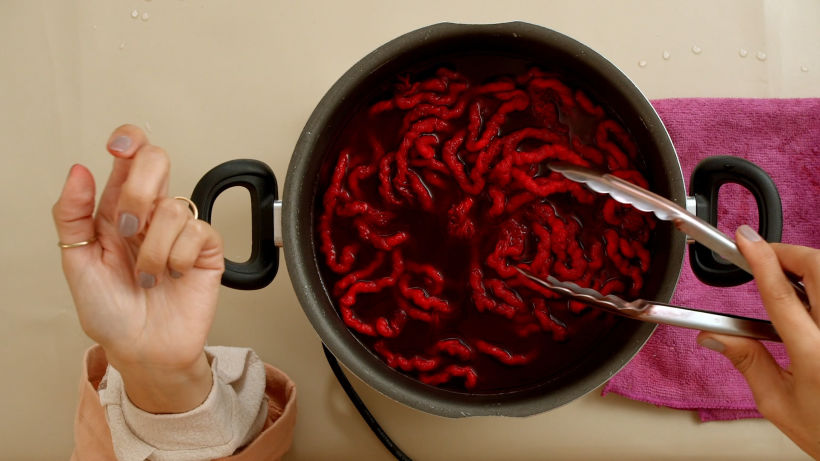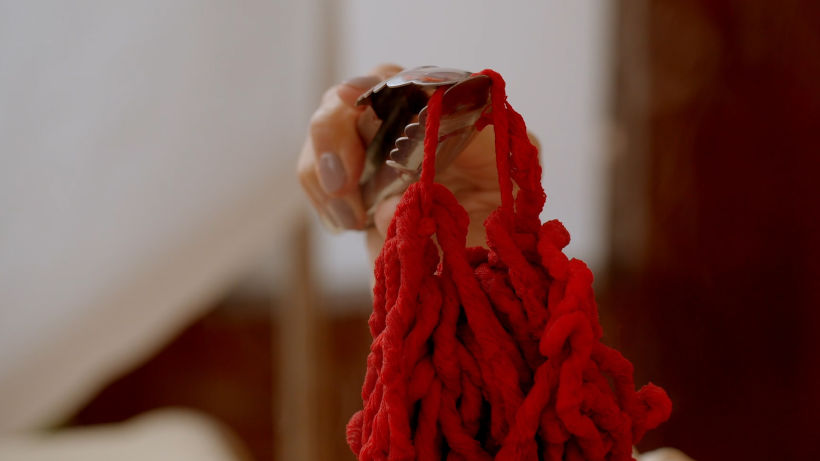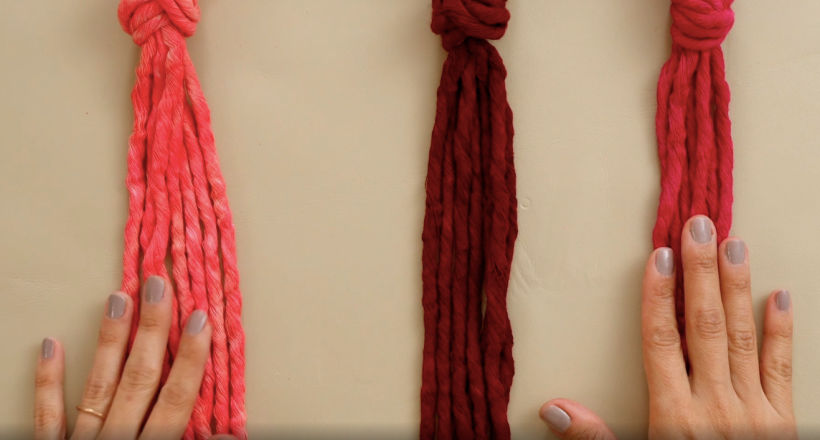Macramé Tutorial: How to Dye a Textile Tapestry
Discover the basic steps for dyeing natural fibers and the process for handling dyes with Pluumbago
Water, heat, dye, and the fibers to be dyed. Although it doesn't require much, the dyeing process has its secrets, especially if you want to obtain different tones and textures, or coppery and opaque colors and use other effects that will make your work stand out.
In this tutorial, Mexican textile artist Ixchel Yué (@pluumbago), founder of the Pluumbago brand, shares her basic tips on the hydration of the strips, temperature, and heating time, as well as the materials needed for the ideal dyeing of cotton fibers.
Necessary materials
Before you start, keep in mind that you'll need to gather:
- A sketch of the work you will do with the dyed strips, in which you establish the amount of fiber each color will receive
- Water and a bowl to pre-hydrate the strips
- A pot
- Dyes of the desired shades
- Tongs to manipulate the fiber and remove it when it is hot
- A rag to clean the work area
- An apron
- Salt or dye fixative
6 steps for perfect cotton fiber dyeing
1. Calculate the amount of dye according to the material to be dyed

In your sketch, determine the exact amount of fiber you will be dyeing with each color. Generally, one sachet of dye corresponds to one or two litres of water, i.e. enough for a small or medium-sized pot. If the idea is to dye a large quantity of fibers, you should use a larger pot, adding more water and dye. And, if you want a uniform color, never dye the fibers in batches: "Do it all at once, to avoid natural color differences," says Ixchel.
2. Hidrate the fibers well

Soak the strips well beforehand, while you prepare the pot and the dyes and heat the dye solution. Use a weight to keep the naturally light submerged. Caution: avoid leaving the cotton to soak for many hours, so that the fibers do not lose their light natural coloring and become stained with yellowish tones.
3. For cotton, boiling water

Each fiber has an ideal dyeing temperature. For cotton, Pluumbago recommends water at 100 °C. When it starts to boil, add the dye and dissolve it well, removing it with the tongs. If you don't have a commercial dye fixative, don't worry: add a teaspoon of salt to the water. Before dipping the fiber, place a kind of hook or ring around the bundle. You will use this during the process to hold the cotton while you stir it in the water and then hang it out to dry.
Attention: do not press the ring too tightly around the strips, so that they are always loose and have enough space for the dye to penetrate them evenly.
4. Dye for half an hour

If you want a homogeneous effect, leave the cotton fibres submerged for at least half an hour. Remember that there is a risk that the colour will not stick to the inner layers. To check this, do a simple test: with the tweezers, separate the fibres a little and check if there are still any white parts. Obviously, if you are looking for a faded effect or a tie-dye pattern, remove the fibres when you get the desired shade.
5. Let it cool

After cooling, you can work the fibers. If you're making a piece for everyday use–a blanket or an item of clothing–it is important to rinse the threads well, until they release all the excess color. If not, to obtain a more vibrant effect, just wait for it to dry completely.
6. Dry in the shade

Whatever the case, always dry the fibers in the shade. The sun burns and stains dyed fibers. Use the hook or ring you created before dyeing to hang the bundle of fibers from a rope or clothesline. After it is completely dry, you will see the actual shade of your fibers. You will then be able to understand what changes to make for the subsequent dyes: whether to add more or less dye, mix colors, or leave the fiber dying over the heat for more time.

Did you like this tutorial? Remember that you can learn how to dye, knot, and weave threads without needles to create tapestries full of color and texture in Ixchel Yué's course Macramé Using the Fiber Emballage Technique.
You may be interested in:
- Macramé: Basic and Complex Knots, a course by Mariella Motilla
- Introduction to Macramé: Creation of a Decorative Tapestry, a course by Belen Senra
- Macramé Knots: Create a Sample Collection, a course by Belen Senra








0 comments